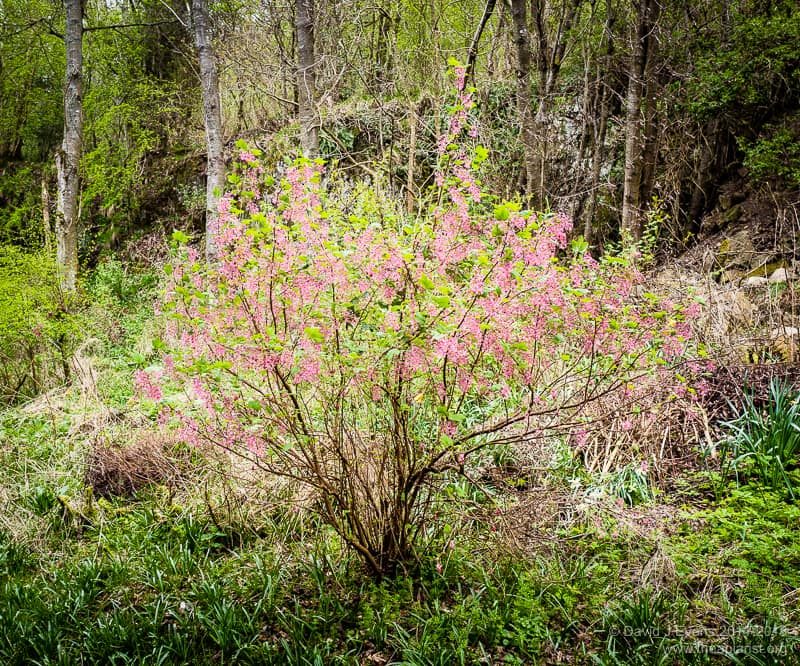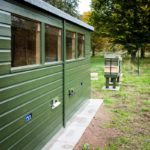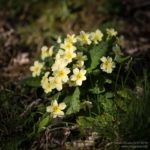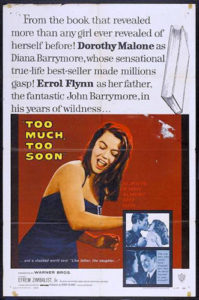Too much, too soon
When does the beekeeping season start?
Some would argue that it’s the time of the year when you prepare colonies for the winter. After all, without good winter preparation there’s unlikely to be a beekeeping season. Others might consider it’s the beginning of the calendar year, just after the longest nights of the year when beekeeping is but a distant memory and all you can do is plan (and build frames).
However, perhaps a more logical start of the beekeeping season is the first full hive inspection. This varies from year to year, depending upon the weather. Many consider the full flowering of Ribes sanguineum, the ornamental flowering current, to be a good indicator that the season is underway and that colonies can be inspected. However, the time this plant flowers appears to vary depending upon how sheltered its location is (and possibly the particular cultivar). There’s some in a very sheltered spot approaching the bus station in St. Andrews that was flowering in mid-February this year. Too early by far.
Macho beekeeping
It’s worth stressing here that not only is there season to season variation, there’s also geographic variation. It gets warmer in the South before the North (at least for the ~95% of the readers of this site who live in the Northern hemisphere). If you’re fortunate enough to live in the uncluttered, quiet, pollution-free, traffic-free and scenic (clearly I’m biased 😉 ) North, don’t be misled by the discussions on the online forums of 8 frames bursting with sealed brood in late March.
Firstly, the poster might actually live in Northern Spain. You can be anything you want on the internet … and anywhere you want. Secondly, some contributors exaggerate when describing their activities and successes (or failures for that matter). Some who, while stressing the fantastic build-up of their Carniolan colonies, conveniently omit to mention they are an overseas breeder and exporter of – you guessed it – Carniolan queens. An omission, but also as the late Alan Clark said, somewhat economical with the actualité. Finally, there’s also a sort of chest-beating macho amongst some where the poster describes pulling colonies apart very early in the season – essentially bragging about the strength of the colonies and their beekeeping prowess.
Use your own judgement about when to open a colony in the early part of the year. Don’t blindly follow the recommendations of others (or me for that matter). The ‘when’ really needs to be informed by the ‘why’.
Not when, but why?
Opening colonies is disruptive. The propolis-sealed crownboard is removed and the colony – even with the gentlest manipulation – is disturbed. There needs to be a good reason to go rummaging through a brood box. That isn’t a justification to not inspect colonies. Just make sure there’s a good reason to compensate for the disruption.
The first inspection should be a quick progress check. Is everything OK? It shouldn’t be a full-blown inspection in which every frame is carefully scrutinised for signs of brood diseases. You’re simply trying to determine whether the queen is laying well, that she’s laying worker brood rather than drone brood and that the colony have sufficient stores and space to expand
All that can be determined in a couple of minutes. You don’t need to see the queen, though it’s not unusual to spot her as the colony is probably relatively sparsely populated. If the box is stuffed with stores consider replacing a frame on the side of the brood nest with a frame of drawn comb. It’s almost certainly too early to only provide foundation.
Outside and inside
Spring is appreciably later in Fife, Scotland than in the South of England. At the time of writing (~8/9th of April) it’s rarely been much above the low teens Centigrade. Colonies are working well during the warmest part of the day, but there’s still a chill in the wind and little point in opening the majority of hives.
The exception are the hives in the bee shed. Based on my experience last year these colonies are 2-3 weeks more advanced than those outside. On a warm day – yesterday just reached 15°C – the temperature inside the shed was almost 20°C. Three of the colonies were giving me cause for concern. One was a poly nuc that seemed very active. The other two were hives headed by purchased queens from last season – these had gone into the winter well and had been flying on borderline days in midwinter. However, having been away for most of March, I’d noticed they were much quieter than other hives when I checked the entrances in early April.
The strong nuc was doing reassuringly well. It had nearly four frames of brood and last years’ marked and clipped queen laying well. The brood pattern was a bit patchy, but I’ll reserve judgement until later in the season when there’s ample pollen and nectar coming into the hive, together with a full complement of workers to support the queen.
In contrast, the two hives were almost devoid of bees. Both queens had clearly failed in the winter as there was no brood. There was no sign of overt disease (in the few remaining bees) and mite drop had been low in autumn and during the midwinter treatment. I suspect that the queens were poorly mated. Disappointing, but these things happen.
Looking back
I have yet to look in any other colonies. It needs to warm up significantly before I do. It’s interesting to compare the development of this season with previous years – and to have some notes I can refer back to in the future. As I write this (remember, it’s the 8/9th of April):
- Fieldfares are still present, although clearly in reduced numbers and drifitng North.
- I have yet to see any house martins or swallows (update – saw both mid-morning on Friday 14th, but still only 9°C).
- Only about 5% of the oil seed rape is flowering (not necessarily a good comparison as different strains can flower at different times).
- Primroses are at their peak but neither bluebells or wild garlic are flowering yet.
Regional climatic differences are a significant influence on colony development. Remember this as you plan your early season inspections and – particularly if you are a relatively new beekeeper – when you compare how your colonies are doing with those reported by others elsewhere.
Finally, it’s also worth remembering the importance of relative colony development between colonies in the same apiary. A single colony that is developing slowly might be being held back because of poor weather. However, if you have two colonies to compare, one that is obviously retarded might be cause for concern … and should be checked for disease or a failing queen.
This is a good example of when it is beneficial to have two colonies to compare.
Too much, too soon was a 1958 biographical film about the actress Diana Barrymore starring Dorothy Malone and Errol Flynn. The film, based on a best selling book of the same name, describes the life of the alcoholic movie star and was pretty-much panned by the critics.
Not one to set the recorder for …





Join the discussion ...